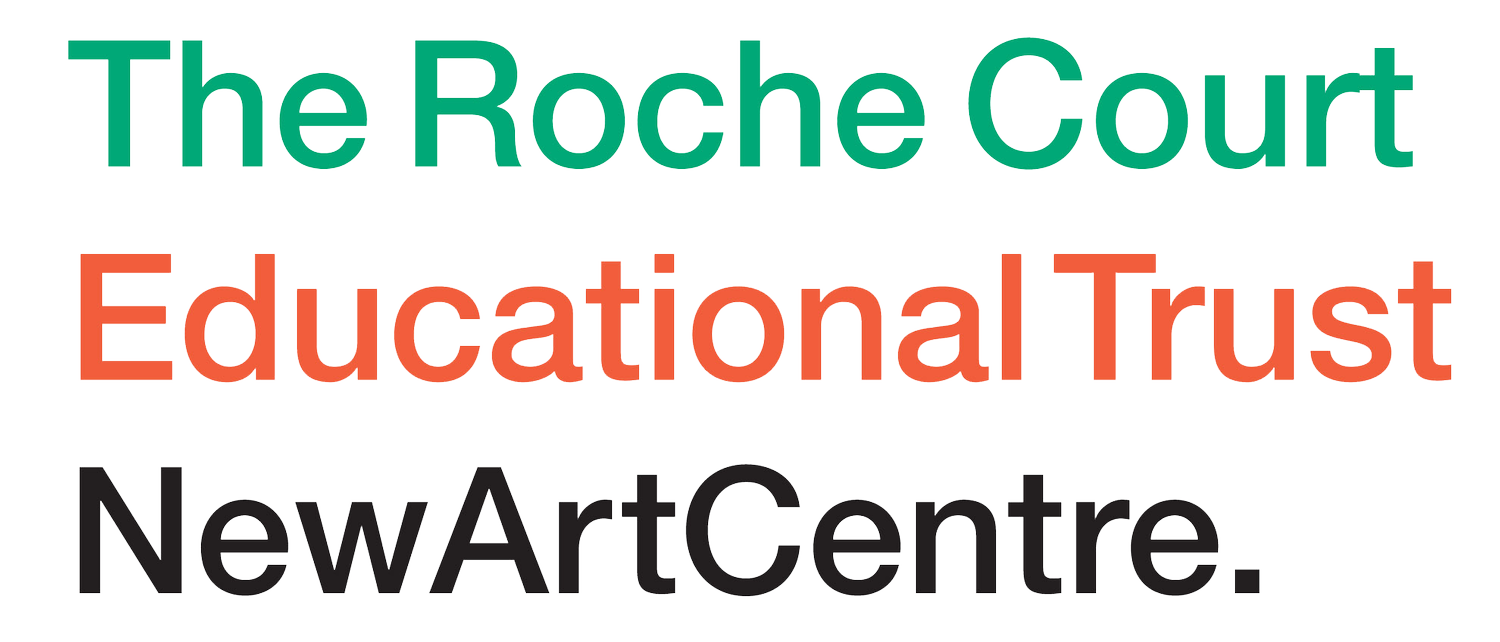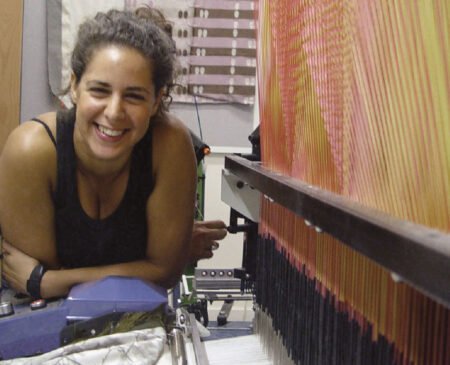Career Profile: Ismini Samanidou
Textile Artist
Interviewed 2020
Ismini’s practice crosses the boundaries of art, craft and design. She works with weaving, drawing and photography and her working methods utilise both digital technologies and traditional techniques and are led by an experimental approach to materials and processes.
Tell us a little about your career path from secondary school to where you are today.
I was born and grew up in Athens, Greece and I went to school there until I was about 18. I came to study in London at Camberwell College of Art where I did a Foundation in Art and Design before going on to Central St Martins where I did a bachelor’s degree in Textiles, focussing on weave. After that I went to the Royal College of Art where I did a Master’s in Constructed Textiles.
I graduated in 2003 and since then I’ve been self-employed with a portfolio career. I move between my own work, which is one-of-a-kind exhibition pieces and artworks, and working with other designers on different projects. I design for industry, I work on commissions with architects, I’ve taught a fair amount and I’ve travelled. So, that’s what they call a portfolio career I think, a bit of everything.
What informs and inspires your work and how has this evolved?
Everything can inspire my work. It could be an exhibition I’ve been to, it could be something that I’ve read or listened to or watched, it could be a conversation, anything really. I’ve always been very interested in looking around me and trying to gather information and that feeds into the work.
In your practice, is there a process that you use frequently?
I use a lot of weaving and photography. These are the main areas that I’ve focussed on in my practice. Drawing comes into it as well and there’s various ways I combine these medium, it’s not always a seamless process. Sometimes I focus on one more than the other but all three are what I feel are at the heart of my process – photography, drawing and weaving.
Could you talk through a development in one of your pieces of work that was significant to you?
I’ll talk about one that involves other people because I think that’s really interesting, when you work as an artist and designer and you reach out and collaborate. It will give a contrast to what I do for the more individual pieces I make for exhibitions where it’s my own line of enquiry and it’s very much about what I’m pursuing at the moment, which is a lot freer and it can be a lot more experimental.
Work I do, for example, in collaboration with architects has to be a lot more considered because I have to think about the space the textile will exist in as part of the installation we’re designing and what properties I need to address in that project. The project I’m working on now is with Allford Hall Monaghan Morris, which is the second biggest architectural firm in England, and I’m working on their post building which used to be a post sorting office in the centre of London between Tottenham Court Road and Holborn. They’re designing a 22-metre wall in the lobby of the building and they approached me to work collaboratively with them.
It’s been a long process. I was there from quite early stages when the building was still being built. I was able to see the building in a very raw state and use that as inspiration to bring in my sense of colour and texture and what may work in the space but also what materials make sense to use and what processes make sense to use for the fabric to have acoustic properties and to be long- lasting. It’s really important when you’re designing something to consider the quality of timelessness but also how the piece you’re creating will sustain itself. It’s lots of difficult considerations.
Do you have any top tips for pursuing a career in the arts?
I think perseverance, tenacity and staying true to what you feel is important in your work, even when nobody really understands what you’re doing, including your tutors, or your friends, or your family, or the people who come to look at the work.
I think trying to keep a very open mind as to what you could do with what your work, with the medium you’re using or with the materials you’re using, or process or ideas. Just be very open to what these things could become. Also, really focus on trying to do the best work that you can possibly do. Work really, really hard but believe in lucky chances as well and make the most of the people you meet. I think it’s incredibly important to try and reach out to see things, to talk to people, to engage with what’s going on, not just in the art world but the world in general.
Find out more on Ismini’s website: www.isminisamanidou.com
Interview collected as part of Making Careers – Textiles Careers Seminar and Workshop supported by The Radcliffe Trust.

